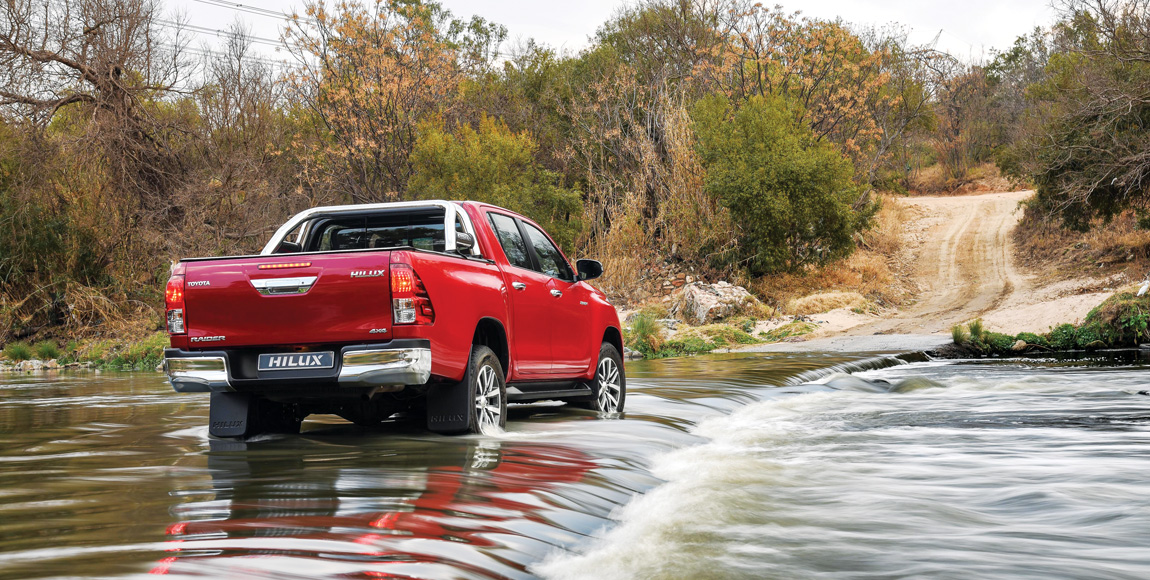LCV segment under change

It is believed that sales of light commercial vehicles will increase in the coming years. GARETH GREATHEAD finds out why this is so and what the industry is doing to prepare itself for these changes.
In South Africa, light commercial vehicles (LCVs) include everything from luxury double cabs to single-cab workhorses and vans all weighing in at less than 3 500 kg. LCVs may also be used as passenger or commercial vehicles, or a mix of the two.
Aiden Castille, general manager of marketing planning at Toyota South Africa, says that sales of LCVs account for around 30 percent of total sales in the commercial vehicle sector.
“Over the past few years, the market has remained relatively stable in line with a flat market overall. It is possible that there may have been some minor discrepancies in the types of LCVs being sold. However, because the LCV sector is all lumped into one basket, it isn’t easy to identify these trends,” says Castille.
Francois van Eeden, CMM LCV, marketing and planning at Nissan South Africa, states that the LCV market is expected to continue growing at an average of 3,5 percent per annum over the next few years.
“Some rationalisation of model availability is inevitable as low-selling imported brands will eventually leave the South African market. Increased localisation will continue growing with significant investment in local production capacity and to enable exports as well,” he notes.
Mark Handley, head of Volkswagen Commercial Vehicles, agrees that sales of LCVs are likely to increase in South Africa, but for different reasons than in Europe, where sales of LCVs with alternative drivetrains are being driven by legislation that sets strict vehicle emission standards for inner-city regions. This may be combined with weight and vehicle-dimension restrictions that dictate the use of an LCV.
Handley explains: “Here, we have an ever-increasing number of self-employed independent contractors that require LCVs. Many of these customers want a vehicle that can be used for business purposes during the week and double as a leisure vehicle on the weekend.”
What customers want
As with other commercial vehicle sectors, the key focus in the South African LCV market is always on bringing down total cost of ownership (TCO). Toyota has always had a strong presence in the LCV sector in South Africa and, according to Castille, much of this has to do with what he calls quality, durability and reliability.
Castille says this forms the foundation of Toyota’s success and guides everything it does. He states: “Naturally, this is closely linked to TCO over the life of the vehicle. “More recently, fleet managers have started to implement their own safety policies and there is greater awareness about the safety components being built into vehicles.
“At the very least, customers want to know how a vehicle performed in the European New Car Assessment Programme (NCAP) crash test. At the moment safety requirements are fairly basic, but we expect that technological development will lead to the implementation of systems such as autonomous breaking and crash-alert systems.”
Fastidious fleet management is something that has become the norm in the industry. “In the future, customers will expect to purchase vehicles with this technology built in,” says Castille.
At the moment, though, customer preferences are towards double cabs, automatics and diesels… “There are fewer petrol-powered vehicles available from original equipment manufacturers (OEMs), while demand for automatic transmissions has grown. The minibus-taxi market is moving from petrol to diesel,” says Van Eeden.
Van Eeden adds that, with the move from passenger vehicles into double cabs, Nissan has noticed growth of a much more sophisticated and discerning customer base. “They expect the refinement and ride quality of passenger vehicles and SUVs to be available in LCVs as well.”

Technology
Handley states that there is big focus on the development of the connected car at Volkswagen. He adds: “The scope of the technology is huge and the industry as a collective is still trying to understand what’s possible.” Another change related to the development of the connected vehicle is greater collaboration between experts in their respective fields to fast-track development.
“Already, Volkswagen and Ford have entered into an alliance to develop bakkie and van markets. In addition, Volkswagen has entered into a deal with software developer Microsoft.”
Partnerships may also be forged with mapping agencies and telematics providers, as this technology is crucial to vehicle autonomy.
Handley believes that it is quite likely that the commercial sector will be the first to adopt e-mobility. “Can you imagine buying an electric Ferrari? The purchase of passenger vehicles is guided by emotion, but when it comes to commercial vehicles it’s a rational choice and it’s all about cost of ownership.
“If an OEM can offer a solution with a drivetrain that saves money over the long term, it will attract commercial buyers,” states Handley.
Van Eeden suggests that Artificial Intelligence (AI) applications and web connectivity will increase.
“Under the Nissan Intelligent Mobility theme, the market can expect some Nissan LCV models to be able to integrate mobile phone telephony and associated features into the infotainment system, as well as ‘intelligent’ features such as adaptive cruise control.”
Customer service
Furthering their customer-service offering is important for both Volkswagen and Toyota. One big focus is to better understand an individual customer’s driving profile and provide solutions according to their specific application.
“We want to gain insight into who our customers are, how they are using vehicles, and how to provide solutions to optimise use of the vehicle while reducing total cost of ownership. Much of this research is being enabled by digitisation,” comments Handley.
He believes that in the next ten to 20 years vehicles will be modular, meaning that they will be able to be adapted for various purposes. For example, at the moment a business may have a number of vehicles used at different times throughout the day. This may include a minibus to collect people in the morning and a panel van to collect stock throughout the day.
“In the future, we expect to see vehicles that can be easily converted from a people carrier with seats to a panel van for transportation of goods,” says Handley.
While our market is very different from that of Europe, OEMs do expect to see an increase in the sale of LCVs in coming years. Sales may come from those wanting to transport passengers, from commercial buyers, or a combination of the two, but what is clear is that the market is preparing itself to better cater for the needs of these customers.
Published by
Focus on Transport
focusmagsa




